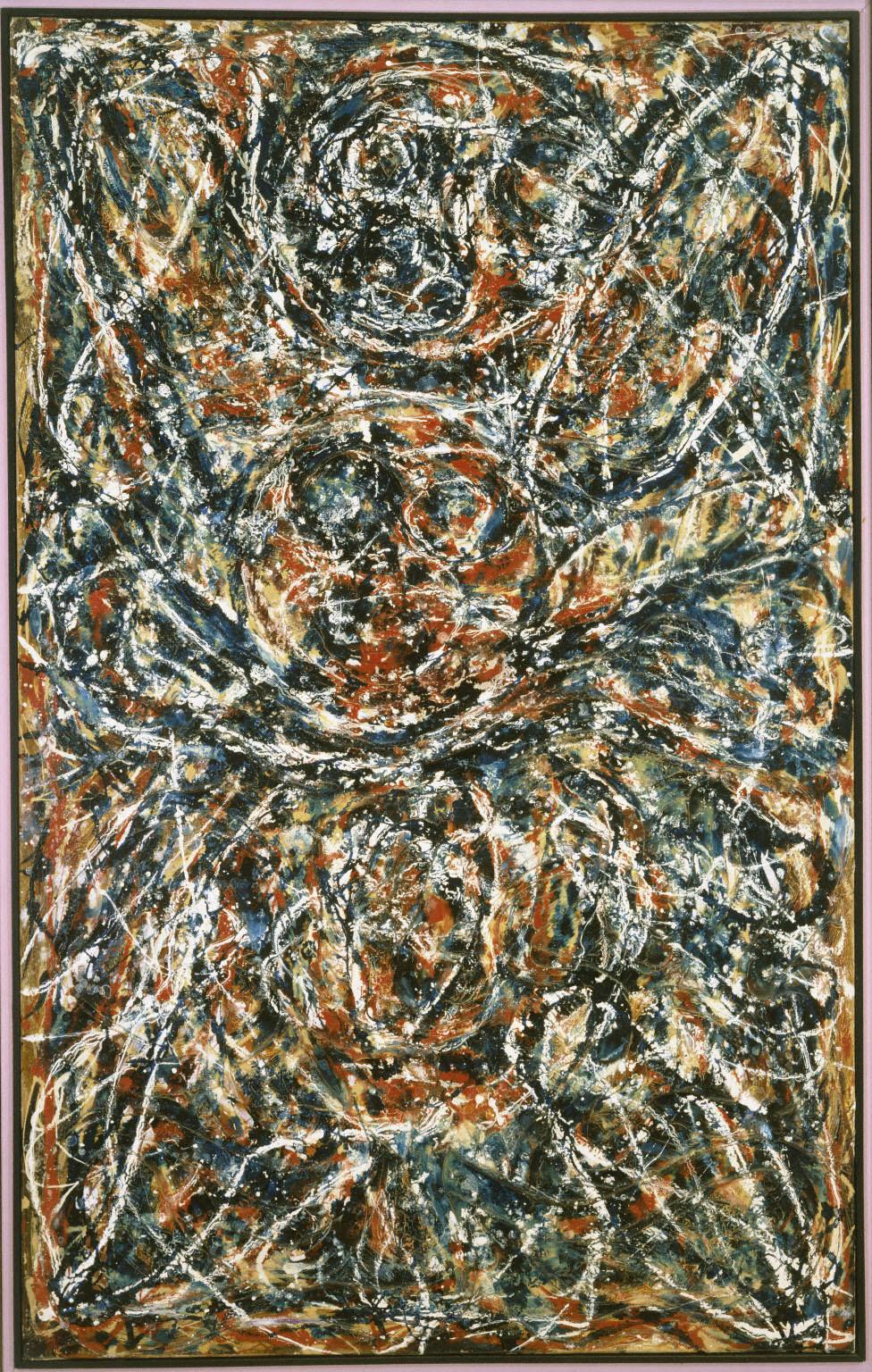Mother and Child
Alfonso Ossorio ( 1951 )

Alfonso Ossorio was a member of the first generation of Abstract Expressionist painters, sharing their rejection of descriptive images while stressing free, spontaneous expression. Ossorio, who met Jackson Pollock in 1949 and became a close friend and neighbor to him, was greatly influenced by Pollock’s work, which he not only admired, but also collected. In the early 1950s, Ossorio began pouring oil and enamel paints onto his canvases, in a similar style to Pollock.
Mother and Child, painted in 1951, reveals his great debt to Pollock in its very complex surface imagery. His technique draws upon the creativity of the Abstract Expressionists, eschewing any representational art for a completely abstract image. Ossorio swirled and dripped reds and blacks on the modest-sized canvas, then mixed drips of white paint, which pop against the darker, intense background. The painting also reflects Ossorio’s interest in religious iconography, which had been renewed during a visit to his native Philippines in 1950.
At Pollock’s urging in 1949, Ossorio went to Paris to meet the French artist Jean Dubuffet. After returning to New York in 1950, Ossorio spent most of 1951 in Paris where his friendship with Dubuffet deepened. The centralized figuration of Mother and Child, one of Ossorio’s Paris pictures, is indebted to Dubuffet’s expressive single figure canvases of that time.